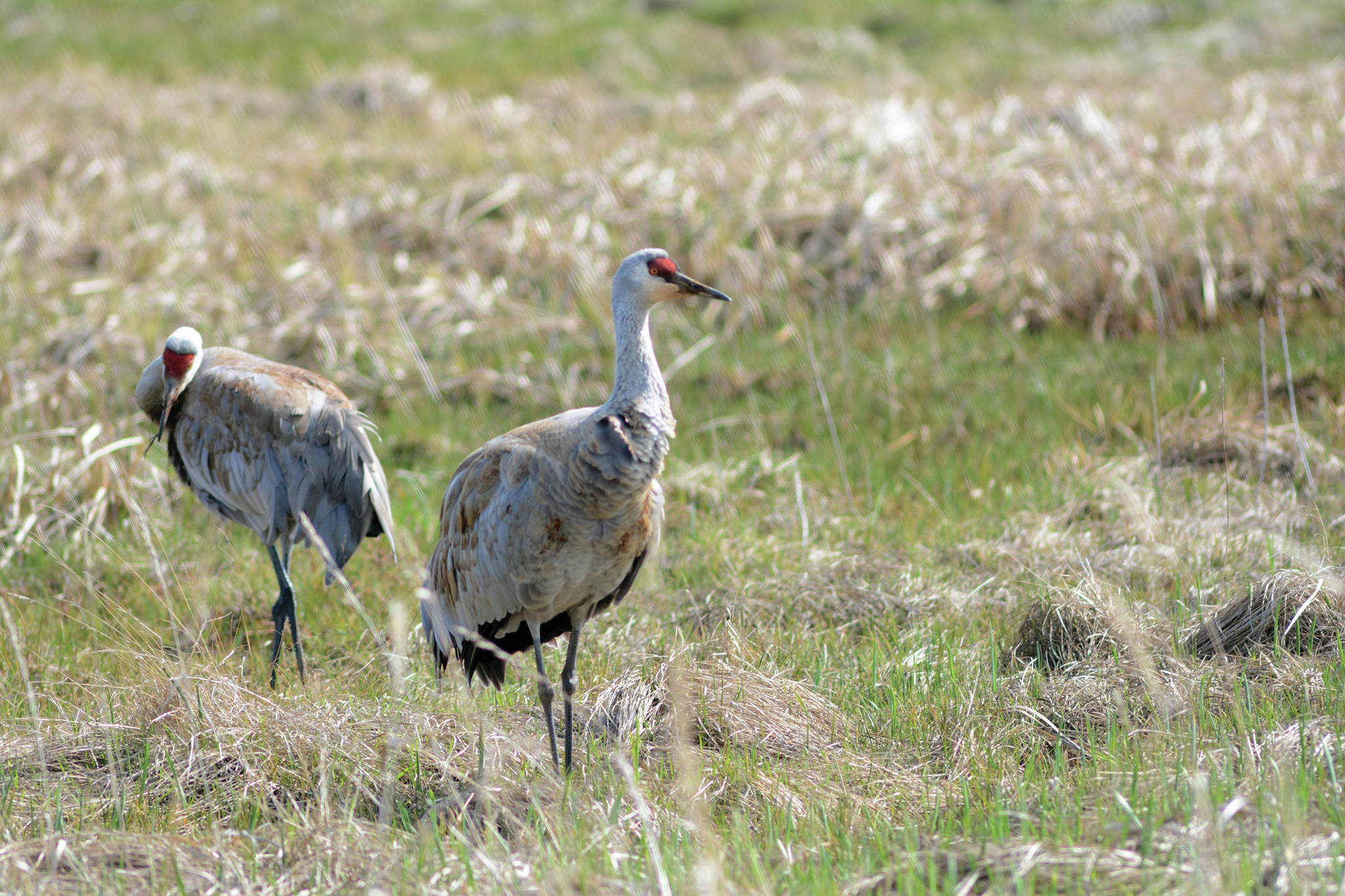In the heart of downtown Homer, Alaska, just below the Sterling Highway and the Alaska Maritime National Wildlife Refuge’s Islands and Ocean Visitor Center, is the richly diverse Beluga Slough.
Each spring for the past few years, three Sandhill Crane pairs arrive in Beluga Slough after a long migration from Central California. About the same time, hundreds of white-fronted, dnow, Canada, and cackling geese arrive. By April’s end, thousands of migrating shorebirds trickle in, arriving just in time for Homer’s annual Kachemak Bay Shorebird Festival.
Beluga Slough is a well-known “Birding Hotspot” site and attracts visitors from around the world. It is part of the Kachemak Bay Critical Habitat Area, the Western Hemisphere Shorebird Reserve Network, the Kachemak Bay National Estuarine Research Reserve, and is an Audubon Important Bird Area. With so much visitation, public education about protecting this vital nesting, resting and feeding area is important.
Last year’s exceptionally dry weather tempted many more people and loose dogs to enter Beluga Slough’s habitat, a time when nesting birds should be focused on feeding and protecting young from wild predators like eagles or coyotes. Young flightless colts are particularly vulnerable to predators if left alone by their parents that are attending to people or dogs in the Slough. These preventable incursions also cost nesting cranes and their young extra energy, disrupt their feeding, and often displace the cranes, shorebirds and other waterfowl.
This spring, Center for Alaskan Coastal Studies, Kachemak Crane Watch, U.S. Fish and Wildlife Service, Homer Chamber of Commerce, and City of Homer collaborated on an educational brochure to raise awareness of the importance of staying out of the Beluga Slough estuary from April 1 to Oct. 31. Visitors can access viewing areas along the boardwalk and gravel trails below the I & O Visitor Center and can stroll the paths atop the inner berm along Bishop’s Beach east to the Slough’s outlet. Bird watching is also accessible from the bike path on the Slough’s northeast end adjacent to the Bypass between Beluga Lake and the Slough. Dogs are required by City Code to be on leash, especially when on trails adjacent to this sensitive habitat. The new brochure is available at www.cranewatch.org under brochures. Printed copies will eventually be available at I & O, CACS, and the Chamber when they reopen.
Please help the Slough’s nesting sandhill cranes succeed in raising their young by staying on the gravel trail, boardwalk, and atop the inner beach berm. If people and pets are predictable (not within the habitat), cranes do not have to worry about people as predators. The reward is seeing cranes in the wild and taking home wonderful memories. If not disturbed, then cranes can attend to feeding and caring for their flightless young and watching for wild predators. It’s a simple and ethical thing to stay out of their habitat and let the cranes use their home safely.
Nina Faust is a Co-Founder and lead educator of Kachemak Crane Watch and retired high school teacher. An avid hiker, self-taught naturalist, photographer, videographer, and conservation activist, Nina has spent more than a decade filming Homer’s Sandhill Cranes capturing a wide variety of crane behaviors on film.



